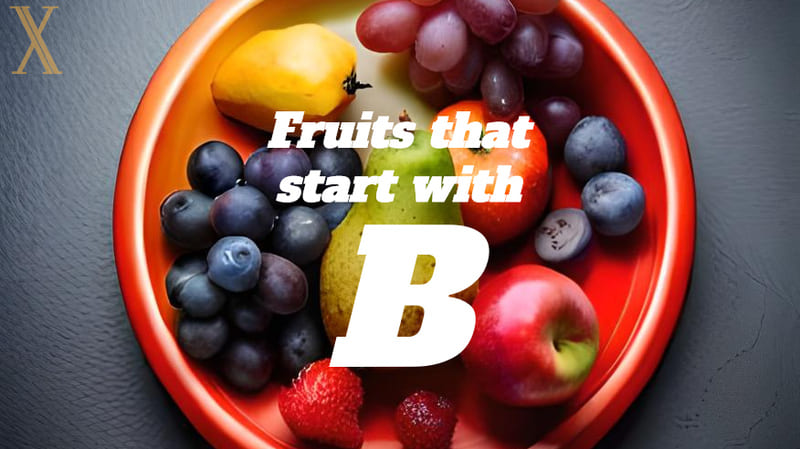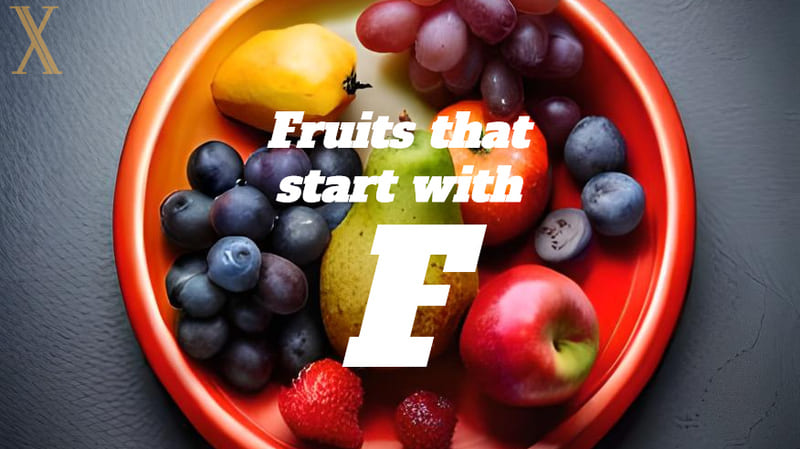
Have you ever heard of dabai, Darwin’s barberries, or dead man’s finger? If not, keep reading to learn about these fruits and more! We’ll share interesting facts about each fruit, including where it comes from, how it tastes, and how it is used in cooking. So whether you’re a food lover, a health enthusiast, or just curious about the world, you’re sure to find something interesting in this list of fruits that start with D.
The list is available as a table of content.
Dabai
Dabai, also known as Canarium odontophyllum, is a fruit native to the Malaysian rainforests. The fruit is small, round, and about the size of a ping pong ball. Its thin and smooth skin turns from green to black when fully ripe. The flesh of the dabai is creamy and oily and has a texture like an avocado. It has a slightly sweet and nutty flavor and is often enjoyed as a snack or used in salads, curries, and soups.
Damson
Damson plums, also known as Prunus domestica subsp. Insititia are small, oval-shaped plums with dark purple skin and green flesh. The fruit is high in antioxidants, vitamin C, and fiber. Its tart flavor is popular in jams, jellies, and baked goods. Damson plums also produce fruit liqueurs, such as sloe gin.
Dangleberry
Dangleberry, also known as Gaylussacia frondosa, is a small, edible fruit that grows in North America. It belongs to the heath family and is related to blueberries and cranberries. The fruit is typically small, round, dark purple to black, and slightly waxy. Dangleberry plants are small shrubs that grow about 1-2 feet tall and can be found in various habitats, including forests, wetlands, and rocky hillsides.
Darwin’s Barberries
Darwin’s barberries, also known as Berberis darwinii, are native to Chile and Argentina. They are small, tart fruits with a bright red color and a distinctive sour flavor. The fruit is often used to prepare jams, jellies, and sauces and is also used to make a type of wine. The plant is also prized for its ornamental value, with its bright yellow flowers and deep green foliage making it a popular choice for landscaping.
Dates
Dates are the fruit of the date palm tree, a sweet and nutritious fruit consumed for thousands of years. Dates are oval-shaped and have a chewy texture, and they are commonly used in a variety of sweet dishes, such as cakes and puddings. Dates are also rich in several vitamins and minerals, including potassium, magnesium, and vitamin B6, and they are a good source of fiber.
Davidson
Davidson plum is a small, tart fruit native to the rainforests of Australia. The fruit has a deep purple color and a sharp, tangy flavor similar to a combination of plum and cranberry. The Davidson plum is known for its high levels of antioxidants, which may help protect against cell damage and inflammation.
Dead Man’s Finger
Decaisnea Hook.f & Thomson is a genus of flowering plants in the family Lardizabalaceae, native to eastern Asia. The genus includes one or two species, depending on the taxonomic opinion, with the only difference being the color of their fruits. They are deciduous shrubs or small trees, growing up to 5 to 8 meters tall, with pinnate leaves and drooping panicles of greenish-yellow flowers. The fruit is a soft, edible greenish-yellow to blue-black pod-like follicle containing a glutinous, jelly-like pulp, described as sweet and similar to watermelon. The seeds are flat, black, and about a centimeter wide.
Dekopon
Dekopon is a sweet and juicy citrus fruit hybrid between kiyomi and ponkan. The fruit originated in Japan and is now grown in several other countries, including the United States. Dekopon has thick, bumpy skin that is easy to peel, and the flesh inside is sweet and seedless. The fruit is often eaten fresh, but people use it in various dishes, such as salads and desserts.
Desert Fig
Desert figs, also known as Arizona figs, are a type of fig that is endemic to central and northern Australia. The oval to round figs pale can be various shades of yellow, orange, pink, red, or purple and 0.9–2.8 cm long by 1–2.8 cm across. Desert figs are an essential food source for many animals that live in these arid regions, including birds, bats, and small mammals.
Desert lime
Desert lime is a small, round citrus fruit that is native to the deserts of Australia. The fruit is about the size of a golf ball and has thin, yellow-green skin that is smooth and glossy. The flesh is tart and juicy, similar to lime or lemon. Desert lime is commonly used in cooking, particularly in Australian cuisine, where it is often used to add a citrusy flavor to dishes such as sauces, dressings, and marinades.
Desert Quandong
Desert Quandong, also known as desert peach, is a small fruit native to the arid regions of Australia. The fruit has a hard outer skin that is usually a deep red or maroon color and soft, juicy flesh that is yellow or white. Desert Quandongs are often used in jams, jellies, and other sweet treats and are eaten fresh.
Dewberries
Dewberries are a type of berry that is similar to blackberries and raspberries. The fruit is small and black, with sweet, juicy flesh rich in vitamins and minerals. Dewberries are commonly used in jams, jellies, and other sweet treats and are eaten fresh. They grow on trailing vines and are often found in wooded areas or along the edges of fields.
Diddle Dee Berries
Empetrum rubrum, also known as red crowberry or diddle-dee, is a plant species in the family Ericaceae found in Chile, Argentina, the Falkland Islands, and Tristan da Cunha. It grows in high altitude areas close to the tree line in Chile and can tolerate alpine conditions. In the Falkland Islands, it dominates large areas of lowland and upland dwarf shrub heath and is referenced in the islands’ unofficial national anthem.
Dinosaur Eggs
Dinosaur eggs are a unique type of pluot: a hybrid fruit that’s three parts plum and one part apricot. The fruit is small and round, with a thick, spiny skin that is green or yellow. Inside the fruit is a soft, juicy flesh that is sweet and slightly tart. Dinosaur eggs are often used in desserts, particularly in South American cuisine, where they are used to make jams, jellies, and other sweet treats.
Duku
Duku, or langsat, is a small tropical fruit native to Southeast Asia. The fruit is round to oblong in shape and has a thin, yellowish-brown, brittle outer shell that is easy to peel. The edible part of the fruit is the white, juicy, and sweet pulp surrounding one to five seeds. The pulp has a unique flavor described as a mixture of sweet and sour and a slightly sticky texture. Duku is usually eaten fresh but can also be used in desserts, jams, and other sweet dishes. In some parts of Southeast Asia, duku is also used to make wine.
Durian
Durian is a large, spiky, intense fruit native to Southeast Asia. The fruit is known for its pungent odor, often described as a mix of sulfur and rotten onions. Despite its strong smell, durian is a popular fruit in many parts of Southeast Asia, where it is used in various sweet and savory dishes. The edible portion of the fruit is the yellow, creamy pulp surrounding one to three large seeds. The pulp has a rich, custardy texture and a complex flavor, often compared to a mixture of almond, cream cheese, and onion. Because of its strong odor, durian is banned in some public places in Southeast Asia, and it is often transported in sealed containers to prevent the smell from spreading.
-

The A-List of Fruits: A Journey Through Fruits that Start with A
-

Fruits that Start with B: A Guide to the Best of the Bunch
-

Discover the Sweet World of Fruits That Start with C
-

Fruits That Start with D: Discovering Exotic Flavors
-

15 Fruits That Start With E: A Delicious Guide
-

23 Fruits that Start with F: A Guide to Nutritious Options
